When I went back to film in 2016, it was with an SLR, the Nikon F3, and the idea of shooting with a rangefinder had never occurred to me. During lockdown, I became curious about other kinds of cameras and acquired a couple of inexpensive rangefinders: an Agfa Optima 1535 and a Yashica Electro 35 GSN. Enjoying the rangefinder experience (albeit a highly simplified one) and getting some decent results from these very inexpensive cameras, I decided that I needed a proper rangefinder and found myself a Leica M3. It was made in 1962 but still looked brand new.
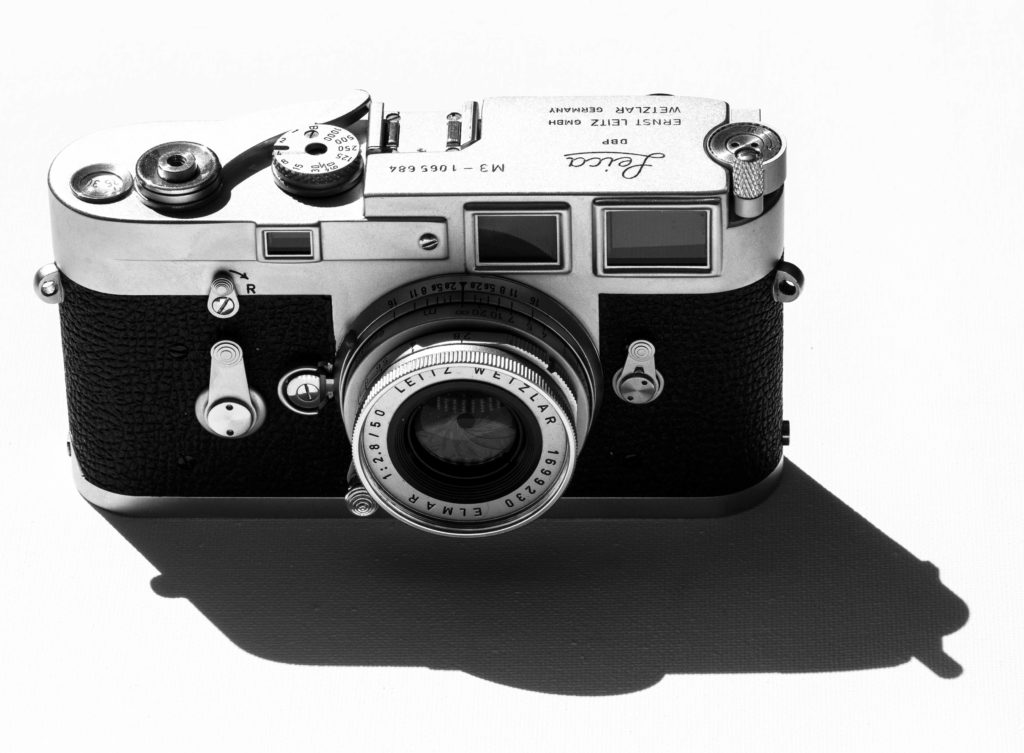
Genesis of the M3
By the time the M3 was launched in 1954, Ernst Leitz GmbH of Wetzlar, Germany had already provided the photographic industry with two defining moments in the history of photography. The Leica I of 1925 had created the new ‘miniature’ 35 mm format and in 1930 the Leica II introduced interchangeable lenses and a built in rangefinder.
M is for Messucher
The ‘M’ in M3 comes from “Messsucher” the German word for “measuring viewfinder/rangefinder” which was the M3’s main feature: a ‘high-magnification’ (0.91x) single viewfinder/rangefinder eyepiece which placed the rangefinder focusing patch inside the viewfinder. Previous generations of Leicas, known as screw-mount or ‘Barnack’ Leicas, had separate eyepieces for focusing and framing.
I put ‘high magnification’ in quotes because there is no actual magnification, but the M3 is as close to 1:1 as you can get in the world of Leica rangefinders, where negative magnification is the norm. This is not the case with all manufacturers. Nikon’s rangefinders of the 1950s, such as the S2, for example, did offer 100% magnification.
3 Lenses
The ‘3’ in ‘M3’ referred to three sets of frame lines seen through its single bright viewfinder window, for three lenses: 50mm, 90mm and 135mm. These were automatically corrected for parallax.
Most of the M3’s features were not new, but like the Nikon F SLR of 1959, the Leica M3 combined a number of existing innovations in a superbly engineered package. The 1930s saw a great deal of innovation and saw the introduction of the newly standardised 135 film cartridge (Kodak Retina I, 1935) and affordable rangefinders (Argus C3, 1936). Many of the features that were improved (or in some cases perfected) in the Leica M3 came to market during this decade:
- The Zeiss-Ikon Contax I rangefinder offered a bayonet lens mount in 1932
- The Kine Exakta, the world’s first popular 35mm SLR had a film winder in 1936, though it was not the first model to introduce this.
- The Contax II offered a combined range/viewfinder in 1936
- Automatic parallax compensation arrived with the scale-focusing Minox of 1937
The World’s Best Rangefinder?
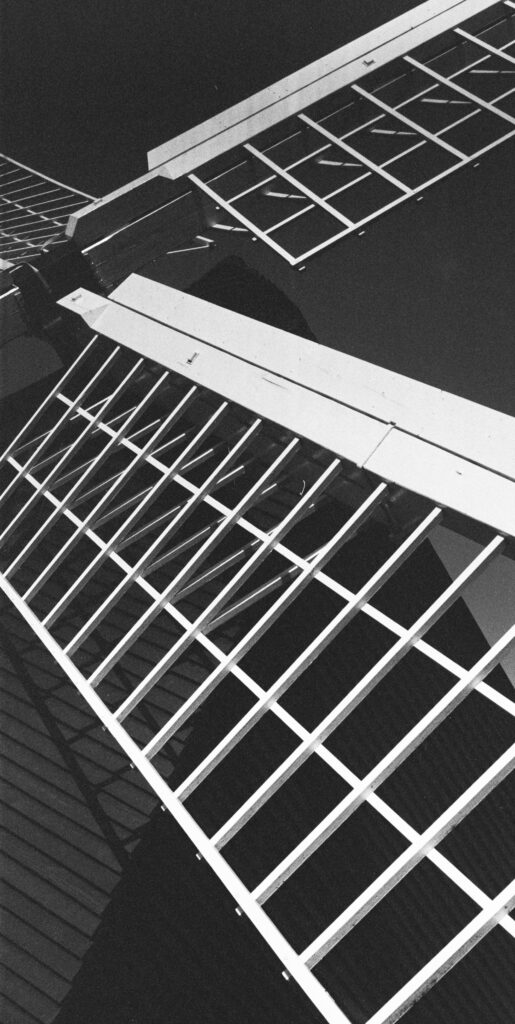
However, the Leica M3 was the first camera to feature true projected parallax-compensating frame lines for its 50mm, 90mm, and 135mm lenses. Even better, the right frame automatically appears in the viewfinder as the photographer mounts a lens of the corresponding focal length. This is known as auto indexing. Handily, the effect of using other lenses can be previewed using the manual frame selector lever located below the front finder window.
The M3 uses a horizontal cloth focal-plane shutter with a maximum speed of 1/1000 second and a maximum flash sync of 1/50. It is extremely quiet – nearly as quiet as a leaf shutter.
To describe the M3 just by its features doesn’t do it justice. It feels like so solid, with its top and bottom plates of chrome-plated brass, that its hard to image it has any component parts. One reviewer suggested the M3 should have its own element on the periodic table! To this day it is regarded by many as the finest rangefinder ever built. To some, it’s the finest camera, ever. Even today, in terms of design excellence and manufacturing quality it is astonishingly good,
Impact and Notable Users
For the professional or enthusiastic amateur photographer of the 1950s, the M3 offered the brightest and clearest view in the combined viewfinder/rangefinder, the best lenses available, a bayonet lens mount for quick lens changes, and a film advance lever for faster shooting. All this in a package weighing a little over 600g! This came at a price as the M3 cost about 50% more than the already expensive Leica III, but Ernst Leitz spared no expense in making the M3.
The reception of the Leica M3 was exceptionally positive, with photographers praising its build quality, reliability, and optical performance. It quickly became the camera of choice for many of the era’s leading photographers, including Henri Cartier-Bresson, Robert Capa, Robert Frank, W. Eugene Smith, Elliott Erwitt, Garry Winogrand, and David Douglas Duncan.
Variants
The Leica M3 was launched as a ‘double stroke’ (DS) model and updated to a ‘single stroke’ (SS) model in 1958. As this was the first lever wind-on model, Leitz was concerned about stressing the film and breaking it, so it split the winding into “double strokes.” This turned out to be unfounded. Mine is a later SS model, and I see no reason to prefer a DS, though some users consider the original mechanism superior.
Shooting Experience
Loading and Unloading

After the magnificent feel of the Leica M3, the loading experience is less impressive, as loading is a little slower than most 35mm models I have used. Leitz kept bottom loading from the Barnack era but with improvements. These included the addition of removable take-up spool to make the process of attaching the film leader easier by allowing it to be threaded outside the camera, and the addition of a rear door flap. When lifted, this flap provided enough access to ensure the film is correctly positioned over the sprockets and the pressure plate.
The rewind knob was also preserved, so there is no crank. To rewind the film, you move the lever on the front of the camera to ‘R’ (reverse), lift the knob out from the central advance indicator, and twist until the knob eventually resists. This is quite a slow process. I put an aftermarket crank on mine, which speeds up the rewind and doesn’t look too bad on the camera.
Through the Looking Glass
However, things improve significantly once that is over the way and you peering through that bright, clear uncluttered viewfinder. The frame lines on the M3 are limited to three and display one at a time – which is great. Newer Leicas have six and appear in pairs. The M3 is best suited to a classic 50mm lens and that’s what I use most.
Before I got an M6 TTL with 0.58X magnification and 28mm framelines I configured the M3 with an external viewfinder and it delivered good results. There are also 35mm ‘Goggles’ available, which I haven’t tried, but apparently you lose some of that magic viewfinder brightness.
Focusing, including critical focusing, is also much easier on the M3 than any other rangefinder I have used, including later Leicas like the M6 TTL. I’ve never had a blurred shot yet, which is definitely not the case with the other elderly rangefinders I’ve used.
Leica Lenses
The M3’s Elmar 50mm
Leica lenses are fabulous. My 1962 M3 came with a period-correct collapsible Elmar 50mm f2.8, which is the successor to the original Leica f/3.5 50mm Elmar of 1925-1961.
The Elmar was superseded by 50mm Summicron, Summilux, and Noctilux lenses in the 1970s. By that time Leitz had sold just over half a million lenses, so there are plenty about. The tiny Elmar is finished in chrome. It is an excellent lens and looks great on the M3.
Summicron f2 50mm
I have also have a lightly faster f2 50mm Summicron-M in the form of the Type IV (11819) made from 1979-1993, which has a 39mm filter thread and a separate metal vented hood. It is very compact and astonishingly good. It is easy to recognise by its tapering, almost conical shape.
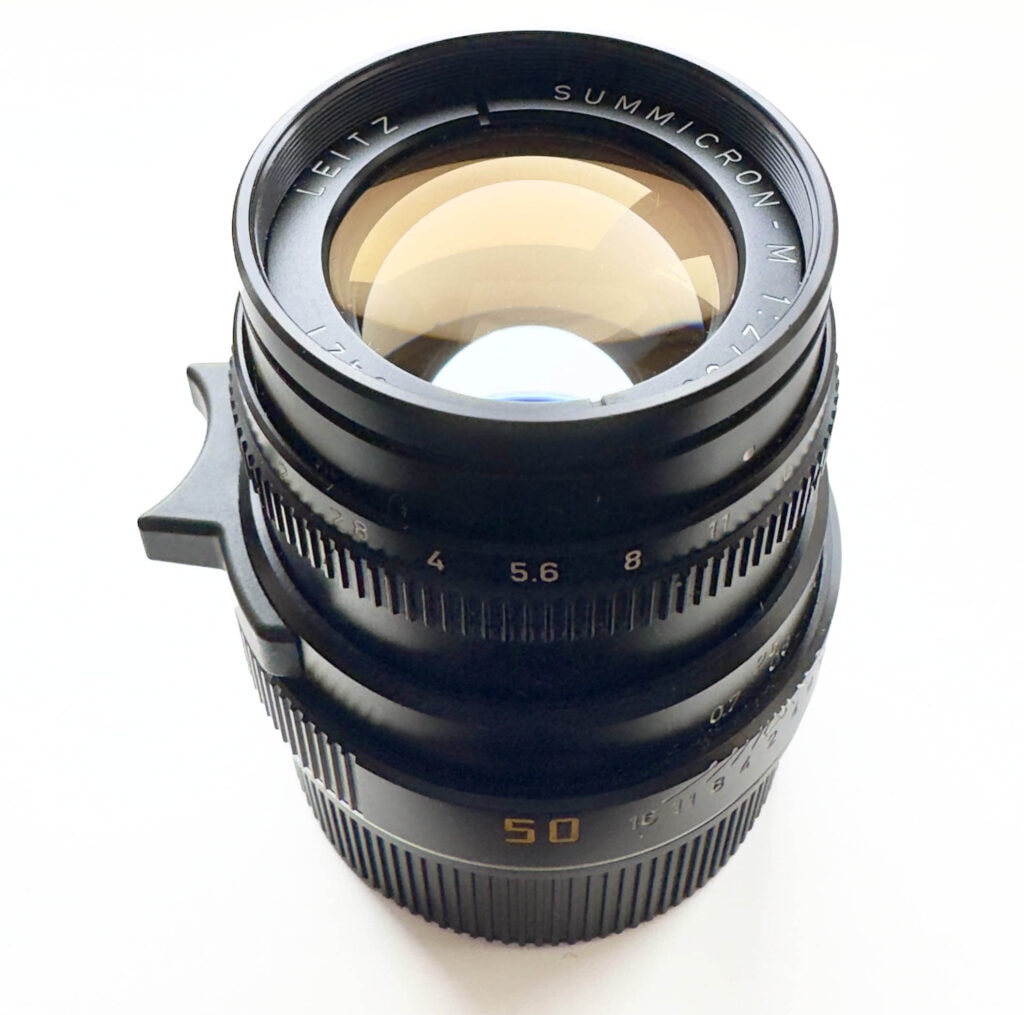
The latest generation of this lens (APO-Summicron-M ASPH f/2.0) has a much higher specification, which offers better correction of colour and aspherical aberrations, a floating lens element and built in lens hood. This version is much more costly at £7,200 at the time of writing, vs £1200-1500 for the 11819.
In addition to the finest optical performance Leica lenses are accompanied by what many refer to as the ‘Leica look’ – as described in this Art Photo Academy article.
What makes Leica lenses so different is their exceptionally high micro-contrast, i.e., an ability to register a nearly full variety of tonal variations between slightly darker and slightly brighter areas of very similar colours. It is the high micro contrast that is responsible for rich colours and smooth tonal transitions that all amount to the three-dimensional “feel”.
I have observed that phenomenon with Leicas, both with the digital Q2, and on film with the M3 and M6 TTL: some shots do have a noticeably more three-dimensional look than I see with pictures taken on other cameras.
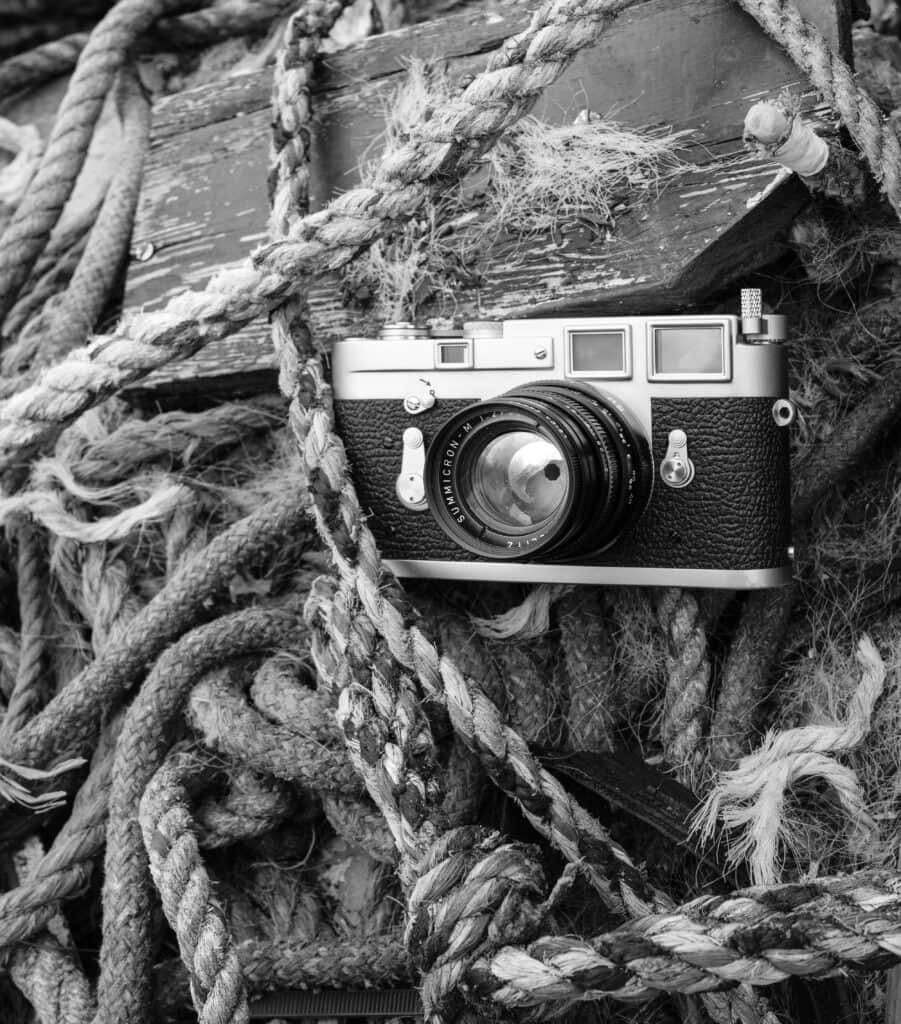
Adding a Light Meter
Though using the Sunny 16 rule is straightforward enough, and black and white film is very forgiving, I always have a light meter to hand in the form of the iPhone app myLightmeter Pro. Some photographers seem to regard the use of a light meter as a weakness, but that’s not my point of view. I usually estimate the light, take a meter reading and then set the shutter and aperture – it’s interesting to see how often you and the meter agree, and it helps develops your estimation skills. Also, given the M3 allows the shutter speed to be set between the marked speeds, a light meter reading can be beneficial in making the best use of the ‘in-between speeds’ as a form of exposure compensation. That’s a bit of a stretch for Sunny 16…
An accessory shoe-mounted external light meter is another option. I’ve used the Voigtlander VC Meter II, which uses ‘over and under’ LED exposure arrows controlled by aperture and shutter speed dials. There are other options, too. The DOOMO Meter D looks similar but has plus and minus LEDs, and their Meter S offers an OLED display screen. HEDECO also offer an OLED model, the Lime Two.
Adding a 28mm Lens and Viewfinder

For landscape photography, the 50mm sometimes isn’t wide enough, so I added a Voigtlander external viewfinder and a 28mm Elmarit-M f2.8 lens. I picked up the E46 filter thread version (11809), which is the last non-aspherical (ASPH) version and has a plastic hood which blocks a little of the viewfinder. This is an excellent lens, with low distortion. It is small and light and less costly than either later versions ,though they are even smaller and take the E39 filter thread which isn’t visible through the viewfinder.
To use the Elmarit-M with the external light meter and 28mm viewfinder required the use of a one-to-two slot adaptor – I found one made by Voigtlander. The clean lines of the M3 were utterly compromised by the resulting Frankenstein’s monster, but it works perfectly well.
Close Focusing
One downside to rangefinders, which I have to say hasn’t affected me at all, is their design is not suited to close focusing – close up they get their beams crossed. Most M mount cameras focus down to 0.7m with the M3 needing a little more runway at 1m.
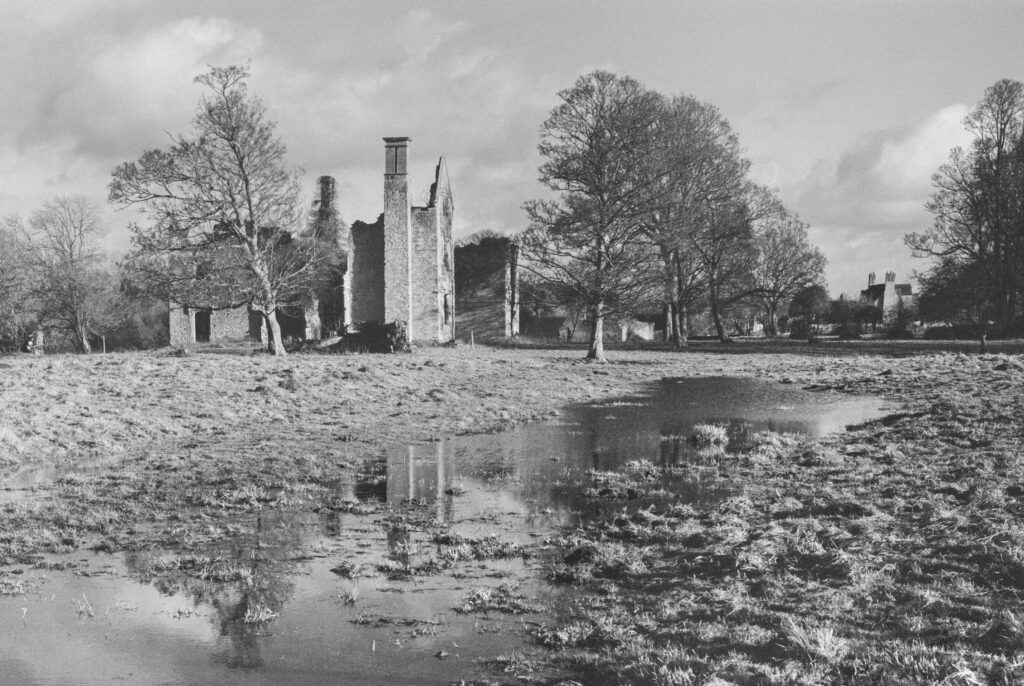
The Successor, M4
Leitz shipped more M3s than any other M film camera, with over 220,000 units sold by the time production of the M3 model ended in 1966. Its successor model was the M4, which sold just 58,000 units. This was due to the declining market share of rangefinders and the rise of SLRs. It was not due to any deficiency in the M4, which offered several enhancements over the M3. These include an angled rewind lever, a self-resetting film counter and frame lines for 35, 50, 90 and 135mm lenses.
The M3 was the high watermark of rangefinders. Historically, that is certain. If we are speaking of models that is more open to debate but it still provides a very special photographic experience and exceptional results.
Thoughts and Further Reading
If you have experience with shooting a Leica M3, I’d love to hear from you – please leave me a comment below. You might also find the following articles on this site interesting:
- Leica Film Cameras in the Movies
- Around the World with a Leica Q
- The Konica I – Konica’s first rangefinder
- The History of Konica – A history of firsts
- When Photos Looked Like Paintings – Pictorialism movement
- From Chemistry to Computation (History of Photography)
- Cameras Year by Year (20th Century Camera timeline)
- The Nikon F6 – Nikon last film camera
- The Nikon FM3A – Nikon’s last manual SLR
- The Nikon F3 – Back to film